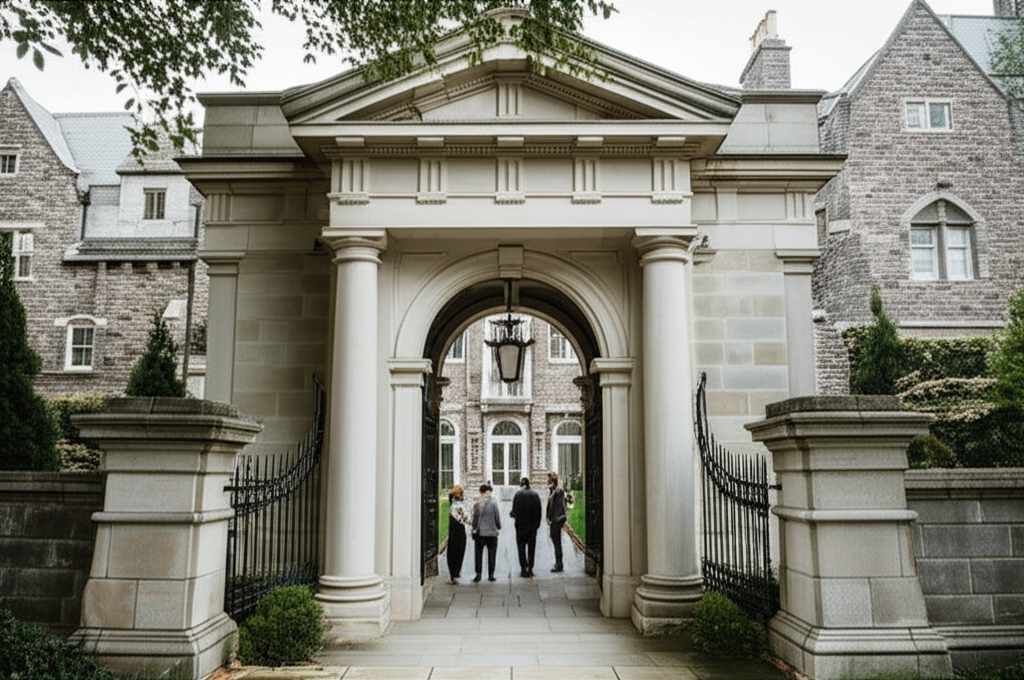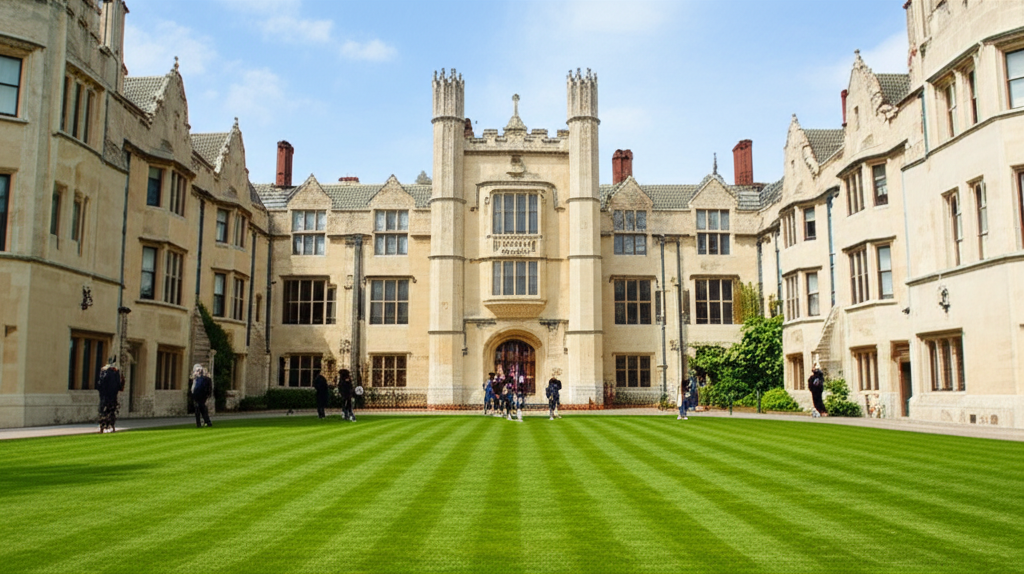The most expensive private school in the USA is typically a boarding school with a highly selective admissions process, extensive facilities, and a global reputation, often costing over $70,000 annually for tuition and fees.
Navigating the world of private education can sometimes feel like deciphering a secret code, especially when discussions turn to costs. Many parents and students wonder about the upper limits of private school tuition and what makes certain institutions so uniquely expensive. This guide aims to demystify this complex topic by exploring what defines a “most expensive” private school and what factors contribute to such high price tags. We’ll break down the key components that drive these costs, helping you understand the value proposition behind them. By the end of this article, you’ll have a clearer picture of the landscape of elite private education and the reasons behind its significant investment.
Understanding the Landscape of Elite Private Schools
When we talk about the “most expensive private school,” we’re generally referring to institutions that set the benchmark for tuition fees in the independent school sector. These schools are often characterized by their long histories, prestigious reputations, and exclusive environments. They typically cater to a global clientele, attracting students from affluent families who seek a particular type of educational experience and a pathway to top-tier universities.
What Defines an “Expensive” Private School?
The term “expensive” is relative, but in the context of private schools, it usually refers to tuition and mandatory fees that significantly exceed the average cost of private education. These institutions are not just about academics; they offer a holistic experience that includes extensive extracurricular activities, state-of-the-art facilities, and personalized attention.
Key Characteristics of High-Cost Private Schools:
- Exclusive Admissions: Highly competitive application processes with low acceptance rates.
- Boarding Programs: Many of the most expensive schools are boarding schools, which include room, board, and often meals as part of the tuition.
- Comprehensive Facilities: Access to advanced technology, athletic complexes, arts centers, and extensive libraries.
- Global Reach: Programs that attract international students and offer global study opportunities.
- Prestigious Faculty: Highly qualified teachers, often with advanced degrees and specialized expertise.
- University Placement: Strong track records of placing students in top-ranked universities worldwide.
- Small Class Sizes: A focus on individualized attention and lower student-to-teacher ratios.
Factors Driving High Tuition Costs
The substantial tuition fees at these elite institutions are not arbitrary. They reflect a significant investment in providing an unparalleled educational experience. Several key factors contribute to these high costs:
- Faculty Salaries and Development: Attracting and retaining top educators often requires competitive salaries and ongoing professional development, which are significant operational expenses.
- State-of-the-Art Facilities: Maintaining and upgrading cutting-edge academic buildings, laboratories, arts studios, and athletic facilities requires continuous investment.
- Low Student-to-Teacher Ratios: Smaller class sizes mean more teachers are needed to serve the student body, increasing staffing costs.
- Extensive Extracurricular Programs: Offering a wide array of sports, arts, clubs, and specialized activities, including travel and research opportunities, adds to the overall cost.
- Comprehensive Support Services: This includes academic advising, college counseling, health services, psychological support, and career guidance.
- Technology Integration: Providing advanced technological resources, learning platforms, and digital tools is a substantial ongoing expense.
- Campus Maintenance and Operations: For boarding schools, this includes maintaining dormitories, dining halls, and extensive grounds.
- Financial Aid and Scholarships: While seemingly counterintuitive, many of these schools offer substantial financial aid to attract diverse talent, and these programs are funded through endowments and tuition revenue.
Identifying the “Most Expensive” Private School

Pinpointing a single “most expensive” private school can be challenging as rankings can fluctuate annually based on reported tuition and fees, and different sources might use slightly different methodologies. However, certain schools consistently appear at the top of these lists. These are often well-established boarding schools with a global reputation.
Top Contenders and Their Fee Structures
While the exact figures change, schools like The Loomis Chaffee School, The Hotchkiss School, Deerfield Academy, Phillips Exeter Academy, and The Taft School are frequently cited among the most expensive boarding schools in the United States. Their annual tuition and boarding fees can range from the high $60,000s to over $70,000.
For example, let’s look at a hypothetical breakdown of what contributes to such costs. Remember, these are illustrative figures and actual costs vary by year.
Illustrative Annual Cost Breakdown for a Top Boarding School (Hypothetical)
| Cost Component | Estimated Annual Cost |
|---|---|
| Tuition | $55,000 – $60,000 |
| Room & Board (Dormitory, Meals) | $15,000 – $20,000 |
| Mandatory Fees (Technology, Activities, Health) | $3,000 – $5,000 |
| Books & Supplies | $1,000 – $2,000 |
| Personal Expenses & Travel | $2,000 – $4,000 |
| Total Estimated Annual Cost | $76,000 – $91,000 |
It’s important to note that many of these schools have substantial endowments, allowing them to offer significant financial aid to students who demonstrate financial need. For instance, Phillips Exeter Academy, a renowned boarding school, has a need-blind admissions policy and provides financial aid to a large percentage of its students. You can learn more about their commitment to accessibility and financial aid on their official website.
The Value Proposition: What Do You Get for the Cost?
The high cost associated with these schools is directly tied to the unique and comprehensive educational experience they provide. Families investing in these institutions are often seeking more than just academic instruction.
Key Benefits of High-Cost Private Schools:
- Academic Rigor and Innovation: Curricula are often designed to challenge students, incorporating advanced subjects, interdisciplinary studies, and opportunities for independent research. Many schools foster strong connections with universities for research programs.
- Exceptional Faculty: Students benefit from direct interaction with passionate, experienced teachers who often serve as mentors. These educators are typically at the forefront of their fields and dedicated to student growth.
- Holistic Development: Emphasis is placed on nurturing well-rounded individuals. This includes robust arts programs (music, theater, visual arts), diverse athletic teams, and a wide array of clubs and organizations that foster leadership, teamwork, and specialized interests.
- College and University Counseling: These schools often have highly specialized college counseling departments that guide students through the complex application process, helping them gain admission to highly selective institutions. For example, many top boarding schools have dedicated college counselors who work with students from their junior year onwards, providing personalized support.
- Networking Opportunities: The student body and alumni network at these schools are often global and influential, providing valuable connections for future academic and professional endeavors.
- Life Skills and Independence: For boarding students, the experience fosters independence, responsibility, time management, and social skills through daily living in a community environment.
- Personalized Learning Environment: With small class sizes and dedicated faculty, students receive individualized attention, allowing for tailored learning experiences that address their specific strengths and challenges.
Beyond Tuition: Understanding Additional Costs
While tuition is the most significant expense, it’s crucial for families to be aware of other costs that can add to the overall financial commitment. These are often referred to as “ancillary” or “additional” expenses.
Common Additional Expenses
| Expense Type | Description | Typical Range |
|---|---|---|
| Application Fees | Non-refundable fees paid when applying to schools. | $50 – $200 per school |
| Uniforms | Required school attire, often including specific seasonal and formal wear. | $500 – $1,500+ annually |
| Technology Fees/Device Purchase | Costs associated with school-provided laptops, software, or network access. | $500 – $2,000+ annually |
| Transportation | Travel to and from school, including flights for international students or home visits. | Varies greatly, potentially thousands of dollars annually |
| Extracurricular Activity Fees | Some specialized clubs, sports, or trips may have separate fees. | $100 – $1,000+ per activity/trip |
| Health Insurance/Medical Fees | Coverage for on-campus health services or required insurance. | $500 – $2,000 annually |
| Parent Association Dues/Fundraising | Voluntary or sometimes expected contributions to school initiatives. | Varies |
| Graduation Fees | Fees associated with the graduation ceremony and related items. | $200 – $500 |
These additional costs can range from a few hundred to several thousand dollars per year, depending on the school and the student’s participation in various activities. It is always advisable to review the school’s official admissions and financial information packet carefully to get a precise understanding of all potential expenses.
Financial Aid and Scholarships: Making Elite Education Accessible

Despite the high sticker price, many of the most expensive private schools are committed to making their education accessible to talented students from diverse socioeconomic backgrounds. This is primarily achieved through robust financial aid and scholarship programs.
Understanding Financial Aid
Financial aid at these institutions is typically need-based. This means that eligibility is determined by a family’s ability to pay, often assessed through applications like the School and Student Service for Independent Schools (SSS) or the NAIS form, along with tax documents.
- Need-Blind Admissions: Many top schools practice “need-blind” admissions, meaning that a student’s ability to pay does not factor into the admissions decision. The application is reviewed solely on its merits.
- Need-Based Aid: Once admitted, families demonstrate their financial need. The school then calculates an expected family contribution based on income, assets, family size, and other relevant factors.
- Aid Packages: The difference between the total cost of attendance and the family’s expected contribution is covered by the school’s financial aid package. This can include grants (which do not need to be repaid), scholarships, and sometimes on-campus work-study opportunities.
- Generous Endowments: Schools with large endowments, often built over decades or centuries, are better positioned to offer substantial financial aid. For example, institutions like Phillips Academy Andover and Lawrenceville School have significant endowments that support their financial aid initiatives.
Scholarships vs. Financial Aid
While often used interchangeably, there can be distinctions:
- Financial Aid (Need-Based): Primarily determined by a family’s financial situation to cover the gap between cost and what the family can afford.
- Merit Scholarships: Awarded based on a student’s academic achievement, artistic talent, athletic ability, or other demonstrated excellence. These are less common in traditional private schools compared to universities, but some do offer them to attract specific talents.
It is vital for prospective families to research each school’s specific financial aid policies and deadlines. Early application for financial aid is often recommended, as funds can be limited.
The Role of Accreditation and Reputation
The reputation and accreditation of a private school play a significant role in its perceived value and, consequently, its pricing. Schools that are accredited by recognized bodies and hold a strong reputation for academic excellence and student outcomes can command higher tuition fees.
Accreditation Standards
Accreditation signifies that a school meets certain standards of quality in its educational programs, faculty, facilities, and governance. Organizations like the New England Association of Schools and Colleges (NEASC), the Western Association of Schools and Colleges (WASC), and the Southern Association of Colleges and Schools (SACS) are examples of regional accrediting bodies. National associations like the National Association of Independent Schools (NAIS) also set standards for member schools.
Building a Global Reputation
Schools that consistently send their graduates to top universities, produce leaders in various fields, and foster strong alumni networks build a global reputation. This reputation attracts ambitious students and families willing to invest in the perceived advantages such a prestigious education offers. This also translates into a school’s ability to attract and retain highly qualified faculty, further enhancing the educational offering.
Alternatives to the “Most Expensive” Schools
While exploring the pinnacle of private education is insightful, it’s important to remember that excellent educational opportunities exist across a wide spectrum of private schools, many with more accessible tuition rates.
Exploring Different Tiers of Private Schools
- Mid-Tier Private Schools: These schools offer strong academic programs and good facilities but may have lower tuition fees, typically ranging from $20,000 to $40,000 annually.
- Community-Focused Schools: Many private schools are deeply integrated into their local communities, offering a nurturing environment with competitive tuition.
- Specialized Schools: Schools focusing on specific learning styles (e.g., Montessori, Waldorf) or specific disciplines (e.g., arts, STEM) can offer unique value at various price points.
When choosing a school, the “best” option is not necessarily the most expensive, but the one that best fits your child’s individual needs, learning style, and your family’s financial capacity.
Public and Charter School Options
It’s also worth considering that high-quality public and charter schools can provide excellent education without the tuition costs associated with private institutions. Researching local public school performance and available charter school options in your area is a valuable part of the educational decision-making process.
Frequently Asked Questions (FAQ)
What is the typical cost of private school tuition in the US?
The average tuition for private K-12 schools in the US varies significantly by region and type of school, but generally ranges from $10,000 to $40,000 per year. Boarding schools and highly selective day schools often fall at the higher end of this range or exceed it.
Are the most expensive private schools always the best?
Not necessarily. While expensive schools often offer excellent resources, faculty, and opportunities, the “best” school is subjective and depends on a student’s individual needs, learning style, and personality. Many less expensive private schools provide outstanding education and a nurturing environment.
What does “need-blind admissions” mean?
Need-blind admissions means that a school does not consider a student’s ability to pay tuition when making admissions decisions. The applicant’s academic, personal, and extracurricular qualifications are the sole factors in the admissions process.
How can I determine if a school offers financial aid?
Most private schools that offer financial aid will have a dedicated section on their website detailing their financial aid policies, application process, and deadlines. You can also contact the admissions office directly to inquire about available aid.
Are there any hidden costs in private school tuition?
While schools strive for transparency, some additional costs beyond tuition and boarding may apply. These can include fees for uniforms, books, technology, transportation, extracurricular activities, and standardized testing. It’s essential to review the school’s full cost breakdown.
What is an endowment, and how does it affect tuition?
An endowment is a pool of assets (investments, donations) that a school holds in perpetuity, with the investment income used to support the school’s operations. Schools with large endowments can often offer more substantial financial aid, potentially allowing them to keep tuition lower or provide more aid than schools with smaller endowments.
What are the benefits of attending a boarding school?
Boarding schools offer a highly immersive educational experience that fosters independence, self-discipline, and a strong sense of community. Students benefit from constant access to faculty, extensive extracurricular activities, and a structured environment conducive to academic focus.
Conclusion
The question of “what is the most expensive private school” leads us to a deeper understanding of the value and investment involved in elite private education. While institutions like Phillips Exeter Academy, The Hotchkiss School, or Deerfield Academy may consistently rank among the highest in tuition costs, often exceeding $70,000 annually for boarding students, this price reflects a comprehensive commitment to academic rigor, exceptional faculty, state-of-the-art facilities, and holistic student development.
These high costs are supported by significant endowments and a dedication to providing unparalleled opportunities, from advanced academic programs and personalized learning environments to robust arts, athletics, and extensive college counseling services. It’s crucial for families to look beyond the sticker price and consider the full value proposition, including the potential for significant financial aid that makes these schools accessible to a diverse range of talented students.
Ultimately, while the most expensive private schools offer a distinct pathway, the decision of where to enroll should be guided by a careful assessment of your child’s individual needs, your family’s values, and a thorough understanding of the educational, financial, and personal fit. Exploring various schools, understanding their financial policies, and considering the long-term benefits will help you make the most informed decision for your educational journey.

